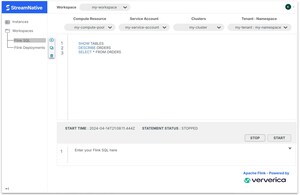SAN FRANCISCO, Oct. 27, 2020 /PRNewswire/ -- Apache Pulsar is an open-source platform that enables industry leaders globally to build pub/sub messaging and event-driven applications at scale. While it has remained under the radar to many, Pulsar manages hundreds of billions of events per day for companies like Yahoo!, Tencent, Iterable and, most recently, Splunk.
In fact, at last week's Splunk annual conference, conf20, Splunk CPO Sendur Sellakumar talked about Splunk's adoption of Apache Pulsar for the Splunk DSP (Data Stream Processor).
"First, we've shifted to Apache Pulsar as our underlying streaming. It is our bet on the long term architecture for enterprise-grade multi-tenant streaming."
- Sendur Sellakumar, CPO, Splunk
What is perhaps most interesting about this shift is that Splunk had been using Kafka for years, but, after due diligence on both Kafka and Pulsar, decided to leverage Pulsar for their DSP product.
Splunk is one of many companies shifting to Pulsar. Pulsar provides the ability to horizontally scale to massive data volumes, with no single point of failure, cloud-native infrastructure and ability to run in elastic cloud environments, automatic data rebalancing, multi-tenancy, built-in geo-replication, tiered storage with infinite retention, and simplified operations.
Why StreamNative Cloud?
While Pulsar is able to streamline infrastructure and simplify operations compared to other technologies in the space, operating a production-grade often requires time and effort that many teams would rather allocate to addressing core business needs. StreamNative Cloud launched in August 2020 to provide users a simple, fast, reliable, and cost-effective way to run Pulsar in the cloud. Weisheng Xie, Chief Data Scientist at Bestpay, shares his team's experience with StreamNative Cloud:
"With StreamNative Cloud, we are now able to launch a resilient, secure, and scalable event streaming service within minutes. It's straightforward and extremely easy to use, which greatly boosts the efficiency of our engineering team."
- Weisheng (Vincent) Xie, Chief Data Scientist/Senior Director, China Telecom Bestpay
StreamNative Cloud is the industry's only fully-managed, cloud-native messaging and event streaming platform powered by the original developers of Apache Pulsar. It works just like the open-source Apache Pulsar, with the same APIs and open-source clients being used to send and receive messages.
StreamNative Announces A Free Cloud Offering
Today StreamNative announces the launch of its Free Cloud Offering. The free offering will allow users to quickly start exploring Pulsar and the ability to run a small scale production Pulsar in just a few clicks. The free offering also has personal significance for StreamNative's CEO and co-founder, Sijie Guo.
"When we launched StreamNative Cloud, we wanted to remove barriers to adoption for Pulsar. While it was a great fit for companies that were further along in their adoption journey, there was high demand from people who were just getting started. Namely, developers who wanted to try Pulsar without having to put down a credit card or get approvals. The free offering makes this possible."
- Sijie Guo, CEO, StreamNative
Guo is one of the original developers of Apache Pulsar and Apache Bookkeeper, an Apache PMC member for both projects, and committed to helping companies be successful on Pulsar and Bookkeeper, regardless of whether they are StreamNative customers or not. In fact, a quick visit to the Pulsar and Bookkeeper community Slack channels will often show Sijie online and answering questions from users.
StreamNative's new Free Cloud Offering is just another way that StreamNative is helping to support Pulsar adoption. If you're interested to try out a fully-functional Pulsar cluster in minutes, with no credit card required, you can get started here.
You can view details on the StreamNative Free Cloud Offering here.
SOURCE StreamNative
Related Links
WANT YOUR COMPANY'S NEWS FEATURED ON PRNEWSWIRE.COM?
Newsrooms &
Influencers
Digital Media
Outlets
Journalists
Opted In





Share this article